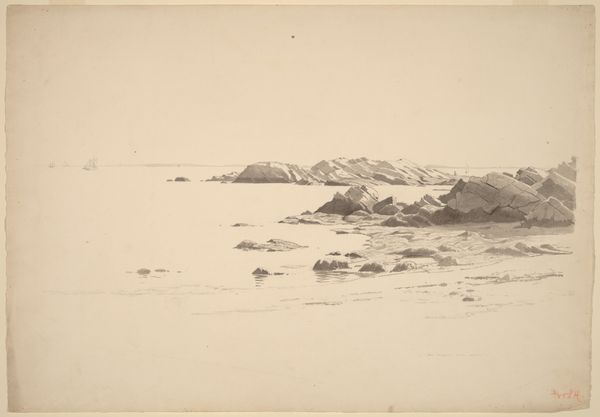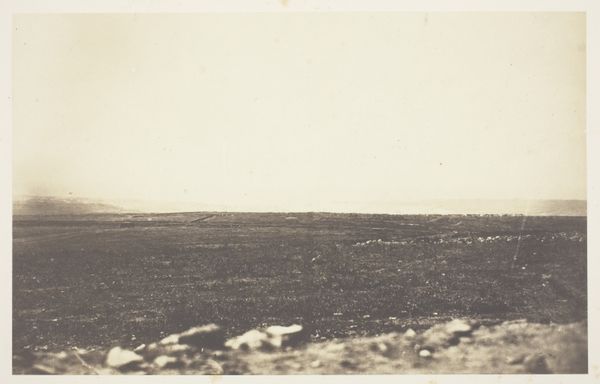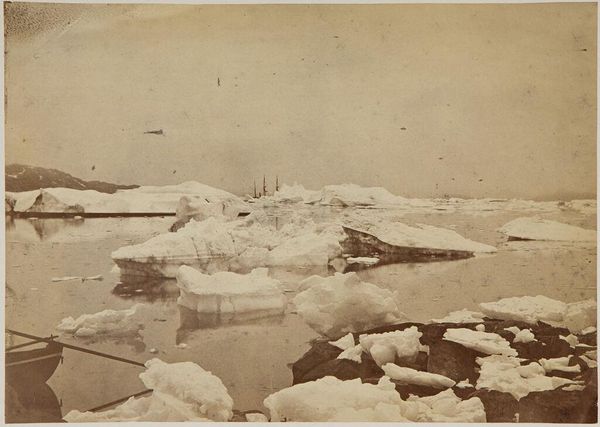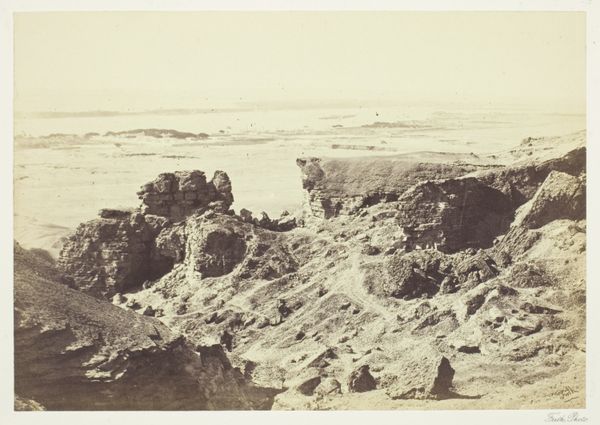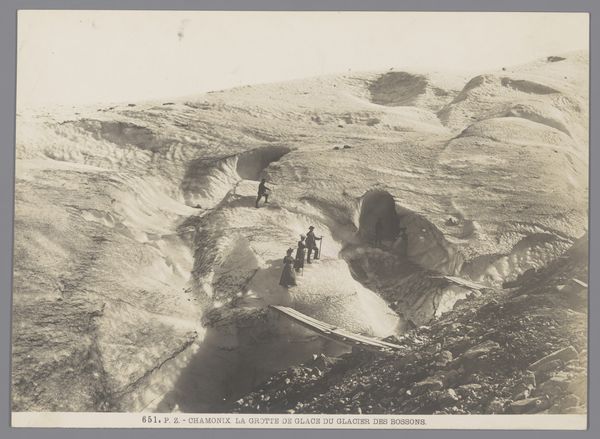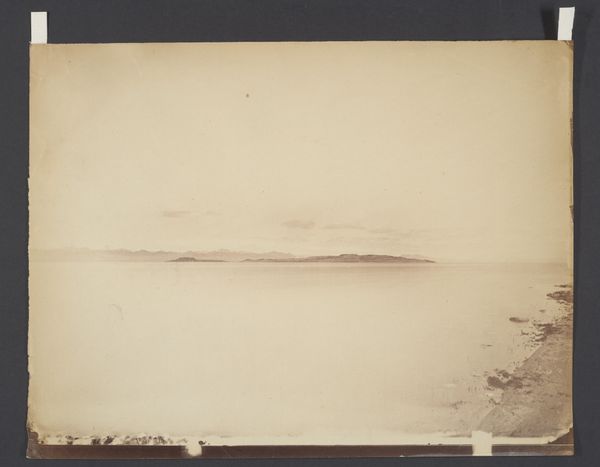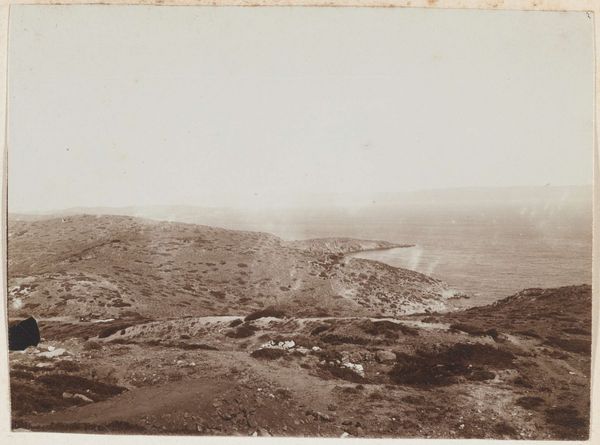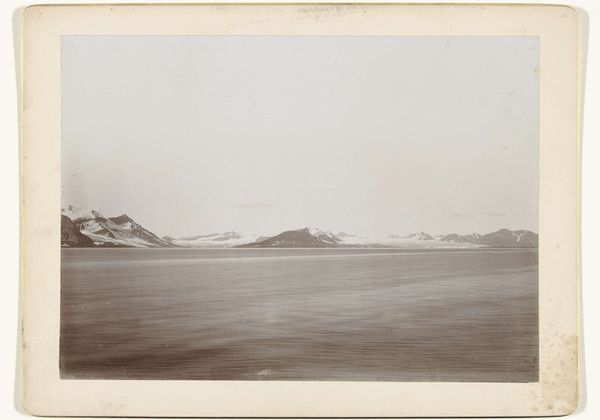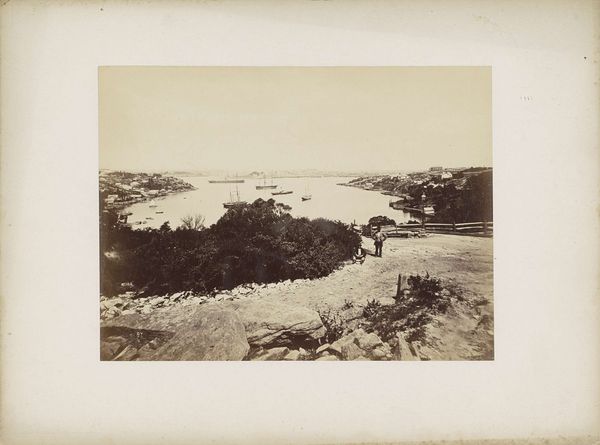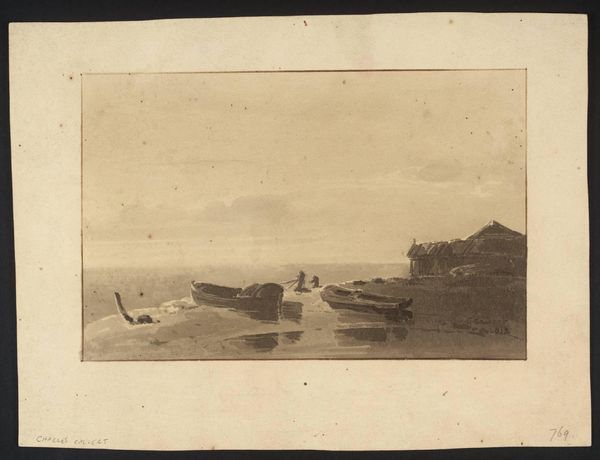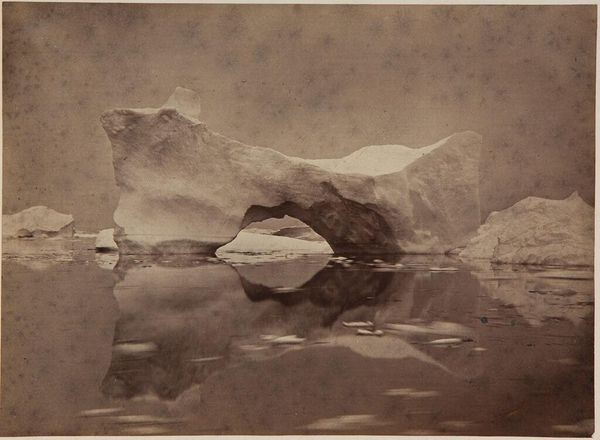
#
cloudy
#
charcoal drawing
#
charcoal art
#
pencil drawing
#
monochrome photography
#
gloomy
#
charcoal
#
graphite
#
idealised weather condition
#
shadow overcast
Dimensions: image/sheet: 21.2 × 27 cm (8 3/8 × 10 5/8 in.)
Copyright: National Gallery of Art: CC0 1.0
Curator: What a strikingly austere photograph. This albumen print by Paul Dittrich, dating from the 1880s, captures the Pyramids of Saqqara and Giza from a commanding, elevated perspective. Editor: It has a certain melancholy to it, wouldn't you say? The tones are muted, almost bleached out, which softens the sharp edges you might expect from such monumental subjects. The overcast sky contributes to this slightly gloomy mood. Curator: Indeed. This tonality, while aesthetically compelling, also speaks to the prevailing photographic conventions of the time. Photographs of Egypt were often romanticized for Western audiences, perpetuating notions of a timeless and somewhat desolate landscape. The scale of the pyramids themselves, reduced by distance and the photographer’s position, emphasizes the vastness of the desert and a kind of historical remoteness. Editor: Absolutely. Notice how the light catches the peaks of the pyramids, pulling them forward while the foreground is textured with shadows. It is as if the artist is using tonal variation and lighting to symbolize hope amid bleakness, endurance beyond time. And this stark contrast pulls your eye deeper into the composition. Curator: Consider the political dimensions as well. Egypt in the 1880s was under increasing British influence. Images like this, circulating widely, reinforced ideas about Egypt as a place of ancient grandeur but also of contemporary decline, ripe for Western intervention and "civilizing" influence. The pyramids themselves became symbols, not just of ancient Egyptian achievement, but also of colonial power dynamics. Editor: From a formalist point of view, the composition's strength lies in its manipulation of depth and scale. The careful placement of the pyramids along the horizon line creates an illusion of infinite space, drawing the viewer into a meditative contemplation on time and the transient nature of human achievement. The varying textures, the flat, almost smudged sky in contrast to the rough granular earth, further enhance this emotional dimension. Curator: I agree, although I still think the political dimensions here are incredibly important to underscore; understanding who took these photographs, why they were taken, and who saw them reveals much about Western attitudes towards the region at the time. Editor: And I concur that such analysis allows us a deeper understanding, even if my focus remains primarily on aesthetic impact. In the end, both of our perspectives deepen our appreciation of this fascinating image.
Comments
No comments
Be the first to comment and join the conversation on the ultimate creative platform.
